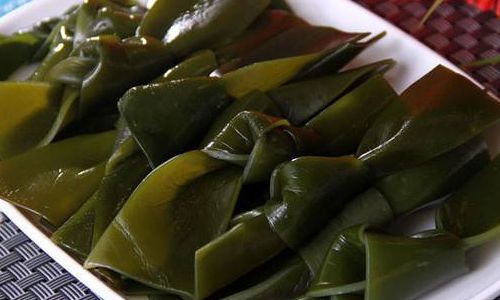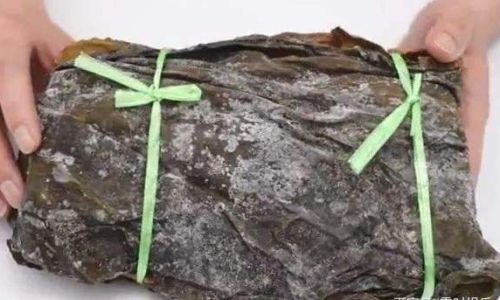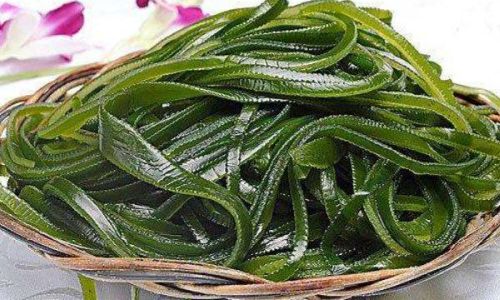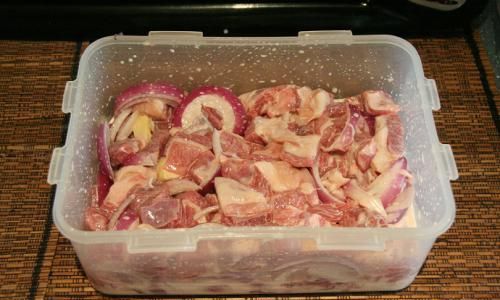Introduction
Salted kelp, a versatile and nutritious seaweed variety, has been a staple in coastal cuisines worldwide for centuries. Its rich flavor, umami-laden profile, and myriad health benefits make it a highly sought-after ingredient in dishes ranging from soups and salads to stir-fries and snacks. However, before enjoying this aquatic delicacy, one crucial step often overlooked by home cooks and culinary enthusiasts alike is the soaking process. This article delves into the intricacies of soaking salted kelp, addressing the question, “How long should you soak salted kelp before eating?” and exploring the reasons behind this essential preparation step.
Understanding Salted Kelp

To appreciate the soaking requirement, it’s first necessary to understand what salted kelp is and how it is processed. Kelp, belonging to the brown algae family, grows abundantly in cold, nutrient-rich ocean waters. Harvested at peak nutritional value, kelp undergoes various preservation techniques to extend its shelf life. One of the most common methods is salting, where kelp is layered with salt to draw out moisture, inhibiting bacterial growth and preserving the seaweed’s natural flavors and textures.
Salted kelp comes in various forms, including whole leaves, strips, flakes, and powders, each suited to different culinary applications. While salting preserves the kelp, it also means that a significant amount of salt is absorbed into the seaweed’s fibers. This high salt content not only enhances flavor but also acts as a natural preservative. However, for consumption, this excess salt must be removed through soaking, a process that also rejuvenates the kelp’s texture and prepares it for various cooking methods.
Why Soak Salted Kelp?
Soaking salted kelp serves several purposes:
-
Salt Reduction: The primary reason for soaking is to reduce the excessive salt content. Consuming too much salt can lead to health issues such as hypertension and cardiovascular diseases. Soaking helps to draw out excess salt, making the kelp safer and more enjoyable to eat.
-
Texture Improvement: Soaking rehydrates the kelp, restoring its natural, tender texture. Dry, salted kelp can be brittle and tough; soaking softens it, making it more pliable and suitable for cooking.
-
Flavor Enhancement: While soaking removes excess salt, it also allows the kelp’s inherent flavors to develop more fully. The umami-rich taste of kelp becomes more pronounced after soaking, enhancing the overall dish.

-
Removal of Impurities: Soaking provides an opportunity to rinse away any dirt, sand, or other impurities that may have adhered to the kelp during harvesting or processing.
How Long Should You Soak Salted Kelp?
Determining the optimal soaking time for salted kelp depends on several factors, including the type and thickness of the kelp, the desired texture and flavor, and personal preference. Here’s a comprehensive guide to help you achieve the perfect soak:
-
Type and Thickness: Thicker pieces of kelp, such as whole leaves or wide strips, require longer soaking times compared to thinner flakes or powders. Thicker kelp needs more time to fully rehydrate and for the salt to diffuse out.
-
Desired Texture: If you prefer a softer, more tender texture, opt for a longer soak. Conversely, for a firmer, chewier result, soak for a shorter duration.
-
Flavor Intensity: Soaking for longer periods can result in a milder flavor as more salt and some soluble nutrients are leached out. For a more intense kelp flavor, soak briefly.
-
Soaking Method: The soaking method also influences the duration. Cold water soaking generally takes longer than hot water soaking because hot water accelerates the diffusion of salt and rehydration process. However, hot water can also denature some of the kelp’s delicate flavors and nutrients, so use it judiciously.

General Guidelines
-
Cold Water Soaking: For most types of salted kelp, soaking in cold water for 20-30 minutes is a good starting point. Thicker pieces may need up to an hour or more. Change the water once or twice during soaking to help draw out more salt.
-
Hot Water Soaking: If you prefer a quicker method, use hot water (not boiling). Soak for about 10-15 minutes, checking frequently to avoid over-softening.
-
Overnight Soaking: For particularly salty or thick kelp, soaking overnight in the refrigerator can be beneficial. This slow, controlled process ensures even salt reduction and thorough rehydration without compromising flavor.
Testing for Doneness
To determine if your kelp is ready, taste a small piece after soaking. It should be tender but not mushy, and the saltiness should be balanced and not overwhelming. If the kelp still feels too salty or tough, continue soaking for a bit longer. Conversely, if it has lost too much firmness or flavor, you may have soaked it for too long.
Post-Soaking Preparation

Once soaked, kelp can be rinsed under cold running water to remove any remaining salt and impurities. Pat it dry with paper towels or a clean cloth before using it in your recipes. Depending on your dish, you can chop, slice, or tear the kelp into desired shapes and sizes.
Cooking with Soaked Kelp
Soaked kelp is versatile and can be used in numerous ways. It adds depth to soups and stews, provides crunch to salads, and enhances the umami profile of stir-fries and stir-ins. You can also incorporate it into smoothies, grain bowls, and even baked goods for a nutritious boost.
Conclusion
Soaking salted kelp is a crucial step in preparing this nutritious and flavorful seaweed for cooking. By understanding the factors that influence soaking time and following general guidelines, you can achieve the perfect balance of texture, flavor, and saltiness. Whether you prefer a quick hot water soak or a slow overnight process, soaking ensures that your salted kelp is ready to elevate any dish with its unique and delicious profile. Experiment with different soaking times and methods to find what works best for your culinary needs and preferences. With the right preparation, salted kelp can become a cherished addition to your kitchen repertoire, bringing the rich flavors and health benefits of the ocean to your table.






0 comments